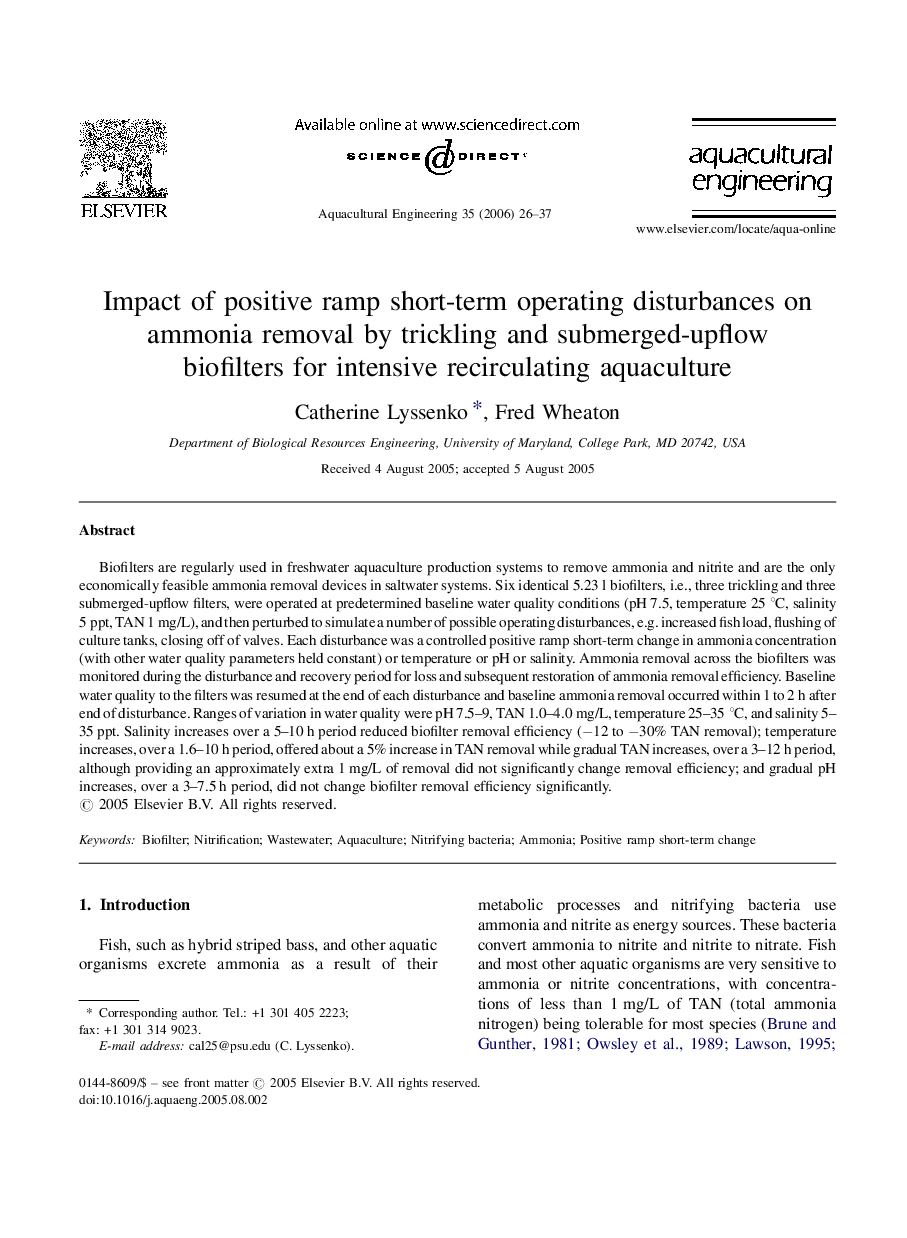| Article ID | Journal | Published Year | Pages | File Type |
|---|---|---|---|---|
| 6381634 | Aquacultural Engineering | 2006 | 12 Pages |
Biofilters are regularly used in freshwater aquaculture production systems to remove ammonia and nitrite and are the only economically feasible ammonia removal devices in saltwater systems. Six identical 5.23 l biofilters, i.e., three trickling and three submerged-upflow filters, were operated at predetermined baseline water quality conditions (pH 7.5, temperature 25 °C, salinity 5 ppt, TAN 1 mg/L), and then perturbed to simulate a number of possible operating disturbances, e.g. increased fish load, flushing of culture tanks, closing off of valves. Each disturbance was a controlled positive ramp short-term change in ammonia concentration (with other water quality parameters held constant) or temperature or pH or salinity. Ammonia removal across the biofilters was monitored during the disturbance and recovery period for loss and subsequent restoration of ammonia removal efficiency. Baseline water quality to the filters was resumed at the end of each disturbance and baseline ammonia removal occurred within 1 to 2 h after end of disturbance. Ranges of variation in water quality were pH 7.5-9, TAN 1.0-4.0 mg/L, temperature 25-35 °C, and salinity 5-35 ppt. Salinity increases over a 5-10 h period reduced biofilter removal efficiency (â12 to â30% TAN removal); temperature increases, over a 1.6-10 h period, offered about a 5% increase in TAN removal while gradual TAN increases, over a 3-12 h period, although providing an approximately extra 1 mg/L of removal did not significantly change removal efficiency; and gradual pH increases, over a 3-7.5 h period, did not change biofilter removal efficiency significantly.
